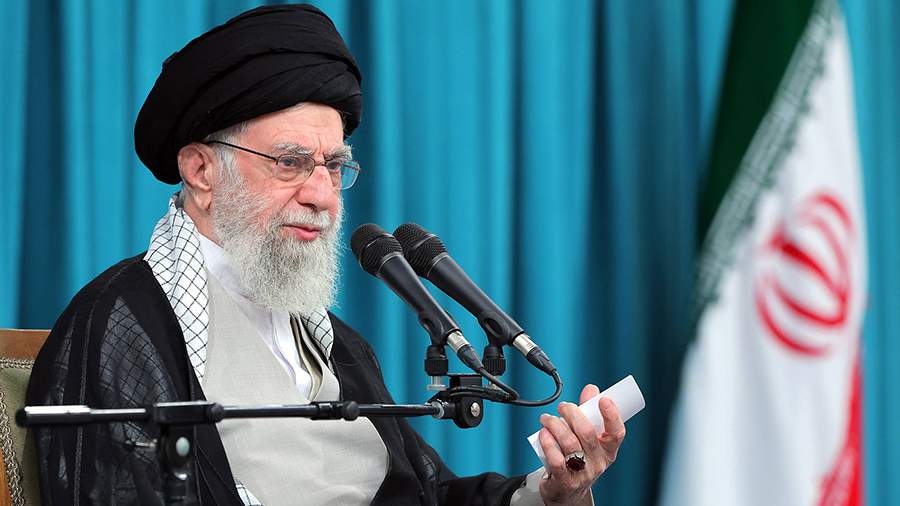The leader of Iran, for whom the Constitution was changed. 5 Facts about Ayatollah Khamenei
- Новости
- World
- The leader of Iran, for whom the Constitution was changed. 5 Facts about Ayatollah Khamenei

Iran's spiritual ruler Ayatollah Ali Khamenei is described in Israel as one of the military targets, believing that his destruction would put an end to the war. At the same time, the United States, Israel's main ally, is not yet ready to approve the assassination of the supreme ruler of the Islamic Republic. What is known about Ali Khamenei, who has led Iran since 1989, is in the Izvestia article.
Fact 1. He was born into a poor family
Ali Khamenei was the second son in the family of Ayatollah Javad Khamenei. Ali's father had three daughters from his first marriage, and five more children were born from his second wife. A large family lived in austere conditions in a house that consisted of one room and a basement. Ayatollah is an honorary title of Shiite theologians who enjoy special authority and have the right to independently make legal decisions based on the Jafari Islamic legal school.
• Ali Khamenei now controls the Setad company, which transfers to charity the proceeds from assets confiscated as a result of the 1979 revolution. Setad is called one of the most influential and closed organizations in the country, it owns shares in almost all sectors of Iran's industry. The value of the company's assets reaches about $95 million.
Fact 2. The disciple of the leader of the Islamic Revolution
• Ali Khamenei met the future leader of the Islamic Revolution and supreme ruler of Iran, Ruhollah Khomeini, in the 1950s, when he studied at a Shiite seminary in the Shiite holy city of Qom, and Khomeini was a teacher there. At the same time, according to Khamenei's official biography, he became interested in revolutionary ideas at the age of 13, after speaking at the school of the Islamic activist Navvab Safavi, who was later executed for an assassination attempt on the Prime Minister of Iran.
• As a follower of Khomeini, Ali was repeatedly arrested, and in 1976 he was sentenced to three years of exile in Iranshahr in the Iranian province of Sistan and Baluchestan, known for its hot, arid climate. Khamenei was allowed to return shortly before the end of his exile, when the events that led to the 1979 Islamic Revolution had already begun in Iran. In 1980, Khomeini appointed Ali Khamenei as his representative in the Supreme Defense Council.
Fact 3. In order for Khamenei to lead Iran, the Constitution had to be changed
• In 1985, when the health of Supreme Leader Ayatollah Khomeini began to deteriorate, Ali Montazeri, the Grand Ayatollah at that time, was named his official successor. But Montazeri held oppositional views and in 1988 opposed Khomeini's decision on the mass execution of political prisoners, so Ali Khamenei became the new successor of the Iranian leader.
• Khamenei did not have the required title of Grand Ayatollah, moreover, he was called Hujat al-Islam, that is, an Islamic scholar of intermediate level, and could not independently make decisions on issues of Islamic law. In order for Khamenei to lead Iran, amendments to the constitution were adopted: now any expert in Islamic law with sufficient managerial skills could become the supreme leader, and Khamenei received the title of Ayatollah overnight. At the time of Khomeini's death, the amendments had not yet been adopted, and Khamenei was initially the country's acting supreme leader.
Fact 4. Khamenei's arm is paralyzed after the assassination attempt
• During the Iran-Iraq War, also known as the First Gulf War, Khamenei was injured in a terrorist attack on June 27, 1981. It happened at the Abuzara Mosque in Tehran, where Ali Khamenei was supposed to deliver a speech after prayer as the representative of the supreme ruler in the Supreme Defense Council.
• The bomb was placed in a tape recorder that was on the table in front of Khamenei. After pressing the play button, a detonation occurred. Inside the case of the tape recorder was the inscription "a gift from the Forkan group (an opposition group of Iran. — Ed.) the Islamic Republic." Khamenei's arm, vocal cords, and lungs were severely damaged in the attack. The recovery took months, and the arm remained partially paralyzed.
Fact 5. Khamenei's family opposes his policies
• The sister of Iran's supreme leader Badri Khamenei does not support his brother's views. In the 1950s, she married Ali Tehrani, one of Ruhollah Khomeini's students, who became one of the opposition leaders after the revolution. In the 1980s, Tehrani and his family fled Iran, and after returning in 1995, he was arrested and imprisoned for 10 years.
• After her husband's death in 2022, Badri Khamenei continued to speak out against her brother's policies. Her daughter Farideh Moradkhani, who was convicted in November 2022 for calling on other countries to sever ties with Iran and sentenced to three years in prison, also holds oppositional views.
Переведено сервисом «Яндекс Переводчик»


